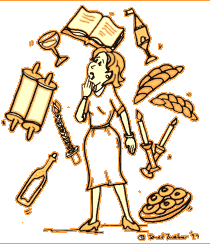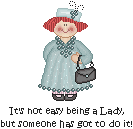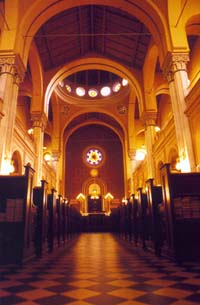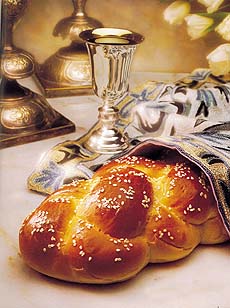From this, we infer that a day begins with evening, that is, sunset..
Shabbat candles are lit and a blessing is recited no later than eighteen minutes before sunset. This ritual, performed by the woman of the house, officially marks the beginning of Shabbat. Two candles are lit, representing the two commandments: zachor (remember) and shamor (observe), discussed before.
At least two candles should be lit, representing the dual commandments to remember and to keep the sabbath. The candles are lit by the woman of the household. After lighting, she waives her hands over the candles, welcoming in the sabbath. Then she covers her eyes, so as not to see the candles before reciting the blessing, and recites the blessing. The hands are then removed from the eyes, and she looks at the candles, completing the mitzvah of lighting the candles.
Ladies going to synagogue... usually exactly dressed like our famous Lady Fig!
The family then attends a brief evening service (45 minutes - that's brief by Jewish standards).
Synagoge of Basel
After services, the family comes home for a festive, leisurely dinner. Before dinner, the man of the house recites Kiddush, a prayer over wine sanctifying Shabbat.
Kiddush is recited while holding a cup of wine or other liquid, no less than 3.3 ounces.
The usual prayer for eating bread is recited over two loaves of challah, a sweet, eggy bread shaped in a braid.
After Kiddush and before the meal, each person in the household should wash hands by filling a cup with water and pouring it over the top and bottom of the right hand and then the left hand. Before wiping the hands dry on a towel, the following blessing should be recited.
Immediately after washing hands and before eating, the head of the household should remove the cover from the two challah loaves, lifting them while reciting the following blessing. The challah is then ripped into pieces or sliced and passed around the table, so that each person may have a piece. The family meal may then begin.
The family then eats dinner. Although there are no specific requirements or customs regarding what to eat, meals are generally stewed or slow cooked items, because of the prohibition against cooking during Shabbat. (Things that are mostly cooked before Shabbat and then reheated or kept warm are OK).
After dinner, the birkat ha-mazon (grace after meals) is recited. Although this is done every day, on Shabbat, it is done in a leisurely manner with many upbeat tunes.
By the time all of this is completed, it may be 9PM or later. The family has an hour or two to talk or study Torah, and then go to sleep.
The next morning Shabbat services begin around 9AM and continue until about noon. After services, the family says kiddush again and has another leisurely, festive meal. A typical afternoon meal is cholent, a very slowly cooked stew. By the time birkat ha-mazon is done, it is about 2PM. The family studies Torah for a while, talks, takes an afternoon walk, plays some checkers, or engages in other leisure activities. A short afternoon nap is not uncommon. It is traditional to have a third meal before Shabbat is over. This is usually a light meal in the late afternoon.
Shabbat ends at nightfall, when three stars are visible, approximately 40 minutes after sunset. At the conclusion of Shabbat, the family performs a concluding ritual called Havdalah (separation, division). Blessings are recited over wine, spices and candles. Then a blessing is recited regarding the division between the sacred and the secular, between Shabbat and the working days, etc.
[ Home ] [ Site Map ] [ Guestbook ] [ Email ] :Graphics by::
Text from Judaism 101 |


















